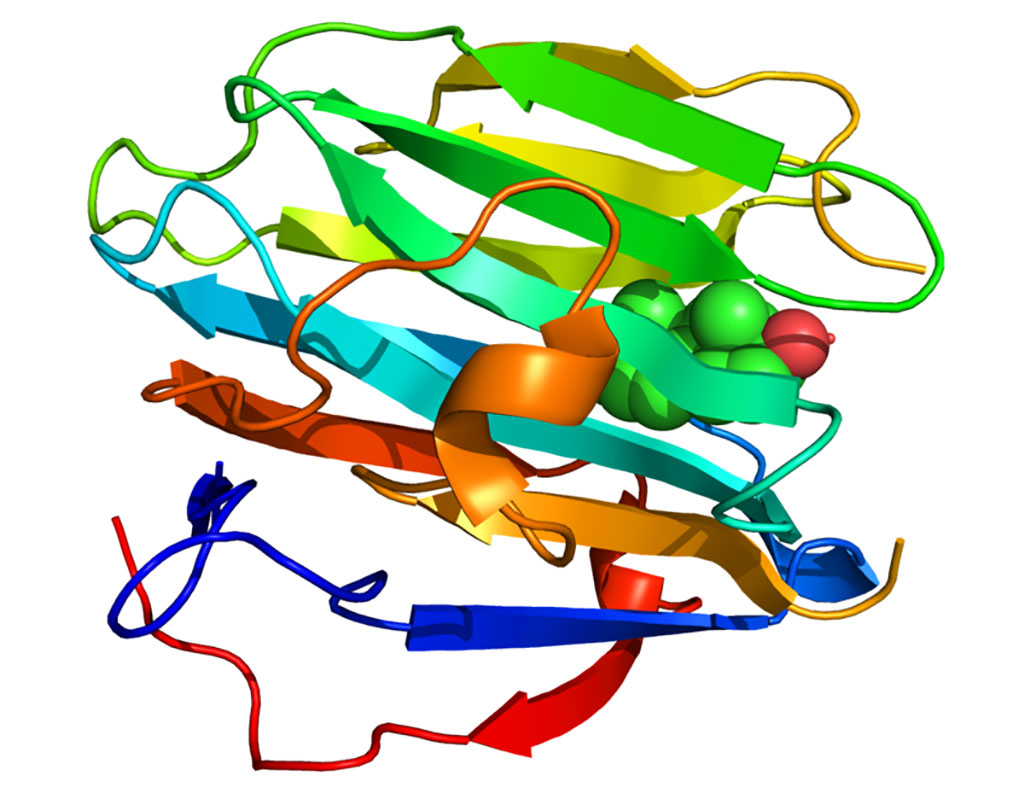Sex Hormone–Binding Globulin Is a Biomarker for Cardiovascular Disease Risk Independent of Total Testosterone Concentration
By LabMedica International staff writers
Posted on 03 Jan 2022
The blood protein sex hormone–binding globulin (SHBG) has been shown to be a biomarker that predicts greater risk of myocardial infarction and lower risk of ischemic stroke and heart failure in men between the ages of 40 and 69.Posted on 03 Jan 2022
Investigators at University of Western Australia (Perth) conducted a study to analyze associations of serum total testosterone and SHBG with incident cardiovascular events in men. Testosterone circulates in the bloodstream, with about 54% loosely bound to serum albumin and about 44% bound tightly to SHBG. Only a very small fraction (1 to 2%) is unbound, or "free," and thus biologically active and able to enter a cell and activate its receptor. Thus, bioavailability of sex hormones is influenced by the level of SHBG.

Image: Crystallographic structure of sex hormone binding globulin (SHBG) (Photo courtesy of Wikimedia Commons)
For this study, the investigators analyzed serum samples obtained from 210,700 men aged 40 to 69 for a period of nine years. During this time, outcomes of incident myocardial infarction (MI), hemorrhagic stroke (HS), ischemic stroke (IS), heart failure (HF), and major adverse cardiovascular events (MACE) were observed and associated with measured levels of testosterone and SHBG and calculated levels of free testosterone.
Results revealed that 4.2% (8790) of the men had an incident cardiovascular event during the nine year course of the study. Lower testosterone concentrations were not associated with incident MI, HS, IS, HF, or MACE after adjustment for key variables. The incidence of MACE was significantly lower for men with lower calculated free testosterone values. Lower SHBG concentrations were associated with higher incidence of MI and lower incidence of IS and HF, but not with HS or MACE.
These results allowed the investigators to conclude, "Men with lower SHBG concentrations have higher risk for MI but lower risk for HF, indicating a role for SHBG as a biomarker for various cardiovascular risks, independently of total testosterone concentrations."
The study was published in the December 28, 2021, online edition of the journal Annals of Internal Medicine.
Related Links:
University of Western Australia













